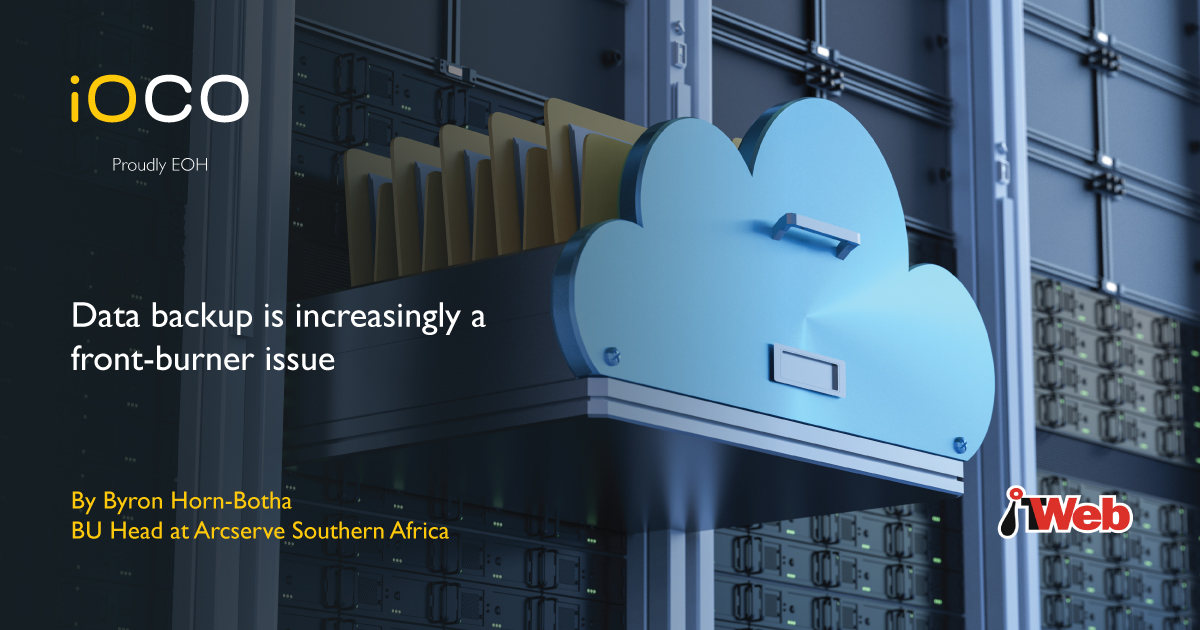By Byron Horn-Botha, Business unit head, Arcserve Southern Africa.
The application modernisation services market is forecast to expand from $11.4 billion in 2020 to $24.8 billion by 2025.
Many companies are pursuing application modernisation strategies to replace older software with innovative computing approaches like new languages, frameworks and infrastructure platforms.
Organisations are eagerly experimenting with and adopting new cutting-edge strategies, whether containerisation, virtualisation, low-code or no-code software development − the quest is to transform their operations and get maximum value from digital technologies like artificial intelligence and big data.
However, as companies look to implement an application modernisation strategy, most fail to understand that a storage architecture plan is a critical piece when transitioning their legacy IT environments. As businesses shift to modern applications and architectures, incorporating a bulletproof data backup and recovery strategy is imperative.
After all, if a company loses mission-critical data during any stage of the development or transition process, the modernisation strategy will not be successful, and could potentially put its investments at risk.
Without a good plan, investments can be wasted
The reality is that without a good data storage and recovery strategy in place, businesses can lose their investments outright. Many large organisations starting their application modernisation journeys wonder if they’re covered entirely.
Increasingly, businesses realise it is not just a matter of optimising their application development and deployment but also having robust security controls and data recovery plans to ensure a smooth transition.
Research firm IDC just published a new report that outlines the challenges organisations face when deploying modernisation strategies like containerised applications, as well as the expected versus realised benefits of their efforts.
The time, effort and investment required to transition to these new technology stacks are not always bearing fruit.
Many companies that embraced modernisation are rolling back some of those changes and repatriating their data because they did not fully anticipate the impacts and challenges.
Essentially, the time, effort and investment required to transition to these new technology stacks are not always bearing fruit, with some organisations having to return to their original architectures and traditional deployment methods.
Data storage is an essential element of modernisation
It has become clear that some application modernisation technologies, such as containerisation, often fall short regarding data storage. Why? Well, for one thing, a container architecture like Kubernetes is exceptionally fluid and dynamic. Depending on the developers’ goals and specifications, these containers are rapidly spun up and just as quickly torn down.
That means the containers are temporary, with a relatively short lifespan. Meanwhile, storage, by definition, is permanent. Data storage cannot live by the same rules as containers − namely, constant creation and destruction.
Data protection will become increasingly important as more enterprises embark on modernisation. Already, many organisations are discovering that unexpected things can happen to their data during migration and deployment.
And as companies turn to more modern technologies and techniques, they will create more and more data that will need to be backed up and stored.
For these reasons, data backup is increasingly a front-burner issue as business leaders realise their data needs must be better managed and protected. That’s why properly backing up data is critically important − and will only become more so in the years ahead.
Backup architecture should be in place before modernisation
When it comes to application modernisation, there is also the question of visibility and knowing where data resides. Where is it being physically stored? How is it being structured? Who has access to it?
So, on one side, you have these new, modern ways of working with data. But on the other hand, there are these growing threats to data in the form of malware, ransomware and other cyber threats.
Organisations embarking on application modernisation efforts need to be prepared for the fact that things can go wrong. That’s why it is critical to have a backup and secondary immutable storage architecture during this transition. A proactive, multi-layered approach to data protection and cyber security prevents and protects data from ransomware and other cyber attacks.
For example, immutable storage − on-premises or in the cloud − safeguards data, while advanced machine learning and behavioural analysis detect known and unknown malware to neutralise previously unseen threats and boot-record attacks.
It is a fact that even if companies follow all the best practices to the letter, a successful ransomware attack is always possible. Proactively planning for recovery after a crisis is essential to a ransomware defence strategy. In this way, if something goes wrong, you will have this option to fall back on and return to a state of ‘business as usual’.
The bottom line is that fear of a ransomware attack cannot stand in the way of the modernisation of applications − this must be the goal. This way, businesses can keep customer experience and superior services front and centre of their operations.
However, adequate ransomware protection must be incorporated. This is not one-dimensional but requires a comprehensive, holistic strategy that includes cyber security, immutable storage and backup, orchestrated disaster recovery, and actionable plans.



